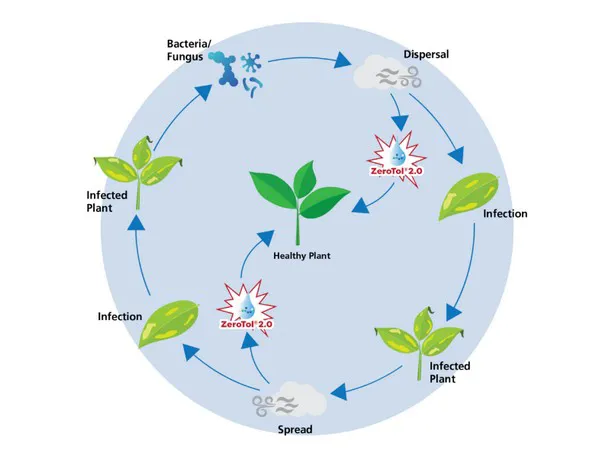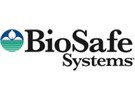ZeroTol 2.0 is a broad-spectrum contact oxidizer of fungal, bacterial, and algal spores and cells. Eric Smith, Horticultural Sales Manager for BioSafe Systems, calls it a “plant sanitizer.” ZeroTol 2.0 kills more than 20 different plant pathogens, including powdery mildew, Botrytis, Xanthomonas, and Rhizoctonia.
A primary goal of an IPM program is to reduce the resistance of pesticides, and ZeroTol 2.0 can make a significant difference. While it’s classified as a fungicide, ZeroTol 2.0 is not a fungicide in a traditional sense because it is not systemic. Unlike other fungicides, ZeroTol 2.0 doesn’t require a FRAC code because of its on-contact activity. “It is just a great tool for a grower’s IPM toolbox,” Smith says.

ZeroTol 2.0 tears apart disease cells of susceptible and resistant spores so they can’t mutate, Smith explains. This means that by implementing ZeroTol 2.0, growers can improve the efficacy of other FRAC code chemistries and help them maintain their strength and performance longer.
ZeroTol 2.0, which debuted in 1998, contains two active ingredients: hydrogen peroxide (27%) and peroxyacetic acid (2%). The two AIs work together and strengthen each other, Smith says.
When ZeroTol 2.0 is used weekly, biweekly, or in another time frame, the chances of plants becoming ill are greatly minimized. It can be used on many greenhouse crops, from poinsettias to mums to azaleas to bedding plants, and is clean enough to be used in cannabis and food crops, Smith says. When used in small doses during the disease lifecycle, Smith says ZeroTol 2.0’s activity is akin to someone sanitizing their hands every so often to kill bacterial spores or viral cells.
“The same thing happens on the plant surface – we disinfest the plant, and that contact activity eliminates the inoculum,” he explains. “Then the chances of a disease outbreak occurring with extremely low inoculum levels is almost zero.”
For more information: 
BioSafe Systems
biosafesystems.com
